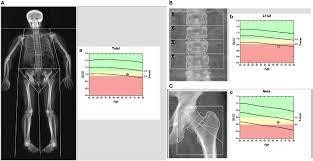The nurse is caring for a client suspected of having an endocrine disorder.
Based on the client's laboratory data, the client is at the highest risk for which condition?
Syndrome of Inappropriate Antidiuretic Hormone (SIADH)
Cushing's syndrome/disease
Adrenal insufficiency
Diabetes Insipidus (DI)
The Correct Answer is A
Choice A rationale: These lab findings, particularly concentrated urine (high specific gravity) and hyponatremia, are consistent with SIADH, where excessive ADH secretion leads to water retention and dilutional hyponatremia.
Choice B rationale: While it can affect sodium levels, Cushing's syndrome typically results in hypernatremia or normal sodium levels rather than hyponatremia.
Choice C rationale: Usually presents with hyponatremia but not specifically with high urine specific gravity or hematocrit.
Choice D rationale: DI is associated with high serum sodium and low urine specific gravity due to excessive excretion of dilute urine.
Nursing Test Bank
Naxlex Comprehensive Predictor Exams
Related Questions
Correct Answer is A
Explanation
Choice A rationale: This is a condition that causes scar tissue to form in the penis, resulting in abnormal curvature, pain, and erectile dysfunction.
Choice B rationale: Hypospadias is a congenital defect in which the opening of the urethra is on the underside of the penis, not at the tip.
Choice C rationale: Phimosis is a condition in which the foreskin of the penis cannot be retracted fully, leading to inflammation and infection.
Choice D rationale: Orchitis is an inflammation of one or both testicles, usually caused by an infection.
Correct Answer is B
Explanation
Choice A rationale: This test is not specific for confirming osteoporosis.
Choice B rationale: This test is called a bone mineral density (BMD) test or a dual-energy X-ray absorptiometry (DXA) scan. It measures how much calcium and other minerals are in a segment of bone.
Choice C rationale: This test is not specific for confirming osteoporosis.
Choice D rationale: This test is not specific for confirming osteoporosis.

Whether you are a student looking to ace your exams or a practicing nurse seeking to enhance your expertise , our nursing education contents will empower you with the confidence and competence to make a difference in the lives of patients and become a respected leader in the healthcare field.
Visit Naxlex, invest in your future and unlock endless possibilities with our unparalleled nursing education contents today
Report Wrong Answer on the Current Question
Do you disagree with the answer? If yes, what is your expected answer? Explain.
Kindly be descriptive with the issue you are facing.
